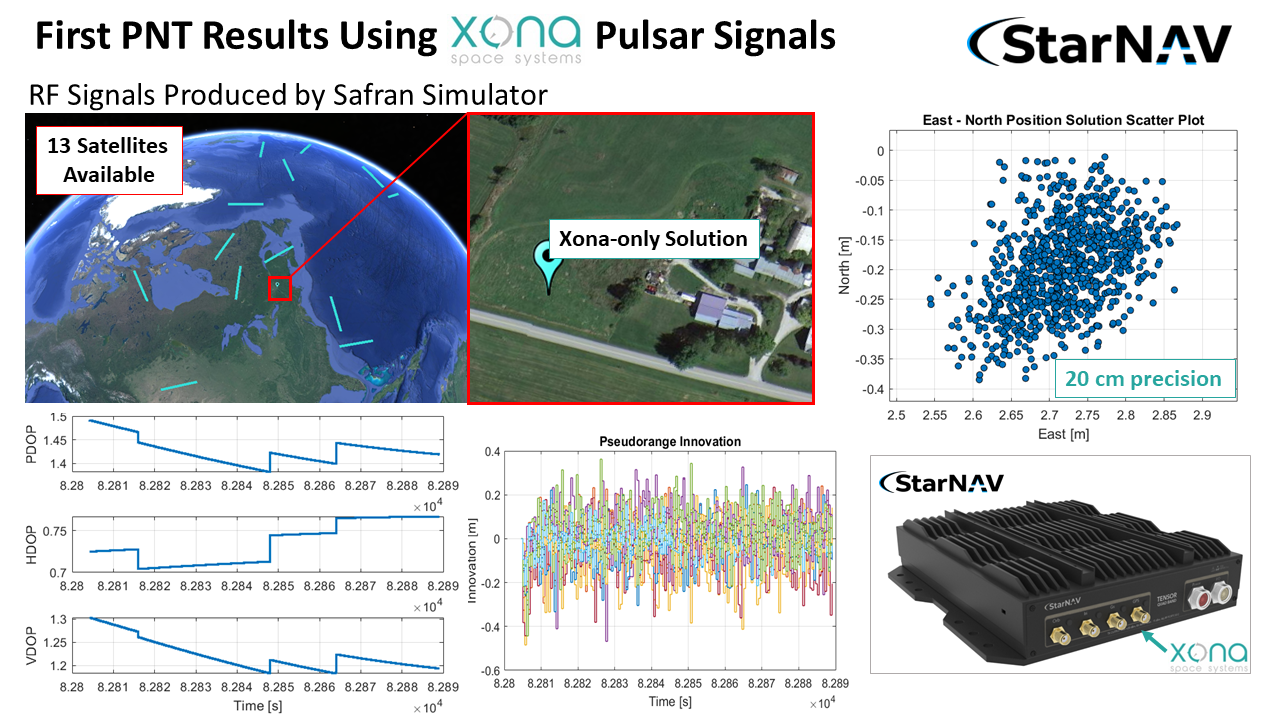In a recent demonstration, a StarNav receiver yielded 20 cm positioning precision from a cold start using simulated Xona PULSAR signals.
StarNav’s receiver tracked up to 13 signals from Xona PULSAR satellites, StarNav CEO Joshua Morales said. The signals were simulated by a Safran simulator. Morales showcased the results at ION GNSS+ in Denver earlier this month.
PULSAR is a next-generation position, navigation and timing (PNT) service provided by a constellation of small low Earth orbit (LEO) satellites that are 20 times closer to Earth than existing GPS. They’re also stronger and more resilient to interference.
“With GPS, there’s been an uptick in jamming and spoofing,” Morales said. “PULSAR exists at a different frequency band, so it’s still available when GPS isn’t.”
The signals support centimeter level positioning, Morales said, and have various security measures built into them to mitigate interference.
When Morales first launched StarNav, the ideal was to manufacture multi-frequency receivers to offer a more robust PNT solution. Morales sees value in adding the PULSAR signals to the receiver box, and opted to partner with Xona early on. The signals bring additional reliability, security and safety to various industries that rely on PNT, including autonomous systems, agriculture and critical infrastructure.
The team has conducted one 90-second test with the Xona PULSAR signals so far, and plans to complete additional tests as more Xona test satellites are released.
“The receiver is ready to go. You just turn it on and it produces positioning results,” Morales said. “We’re very excited for the satellites to come out and start transmitting.”
StarNav receivers are being tested in other areas as well. In March, for example, the U.S. Air Force tested StarNav’s GPS L5 and E5a receiver on a T-38C jet at Edwards Air Force base, and the U.S. Army tested the receivers at undisclosed locations in 2022. More test flights are slated for later this year.
Xona is working with various partners to get its PULSAR service up and running, including Syntony, Spirent and Hexagon | NovAtel. In June, Hexagon | NovAtel demonstrated that its OEM7 GNSS receivers can track a Spirent Communications simulated signal that’s identical to the PULSAR signal broadcast by Xona’s LEO satellites.
Xona is preparing for its first production satellite launches, which are ramping up in 2024.






